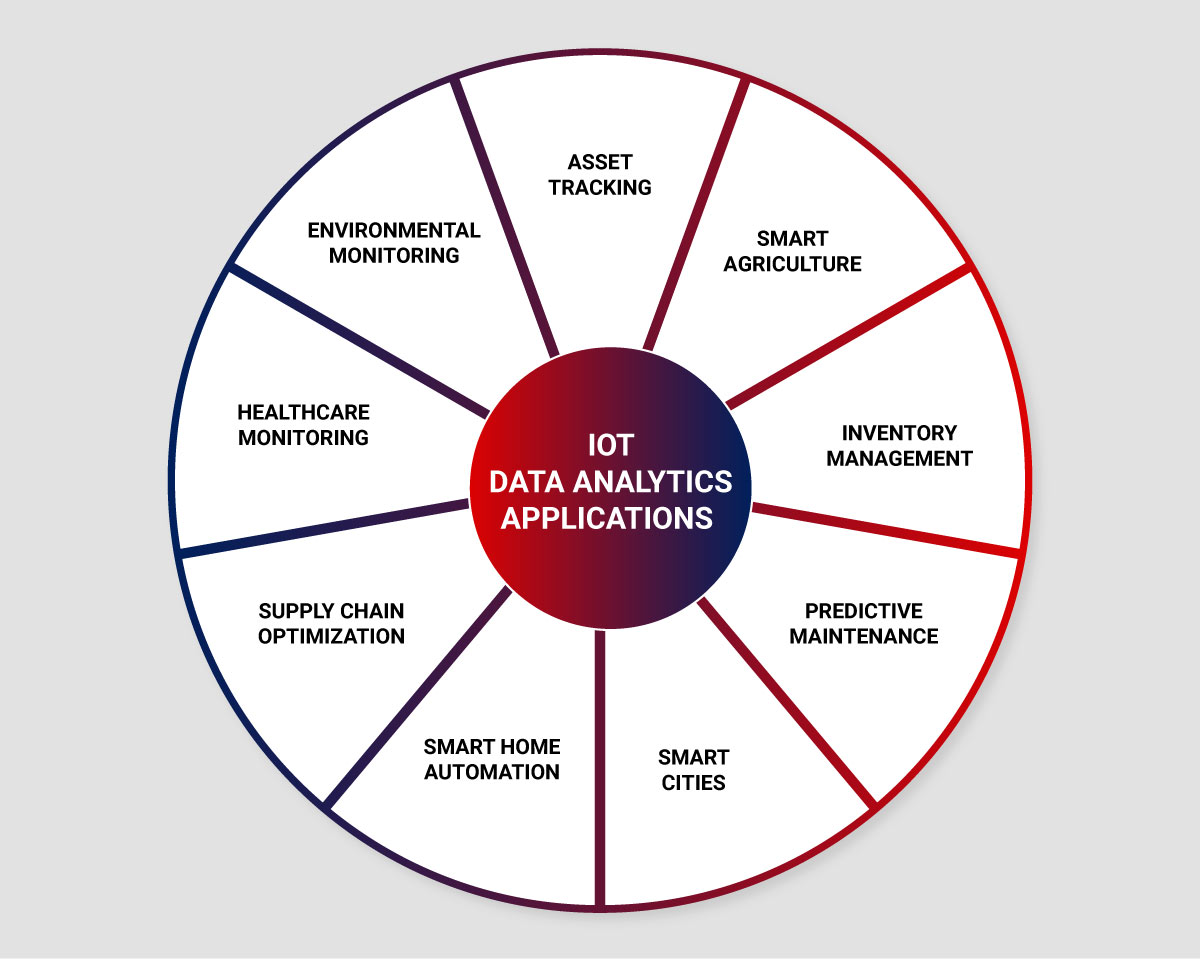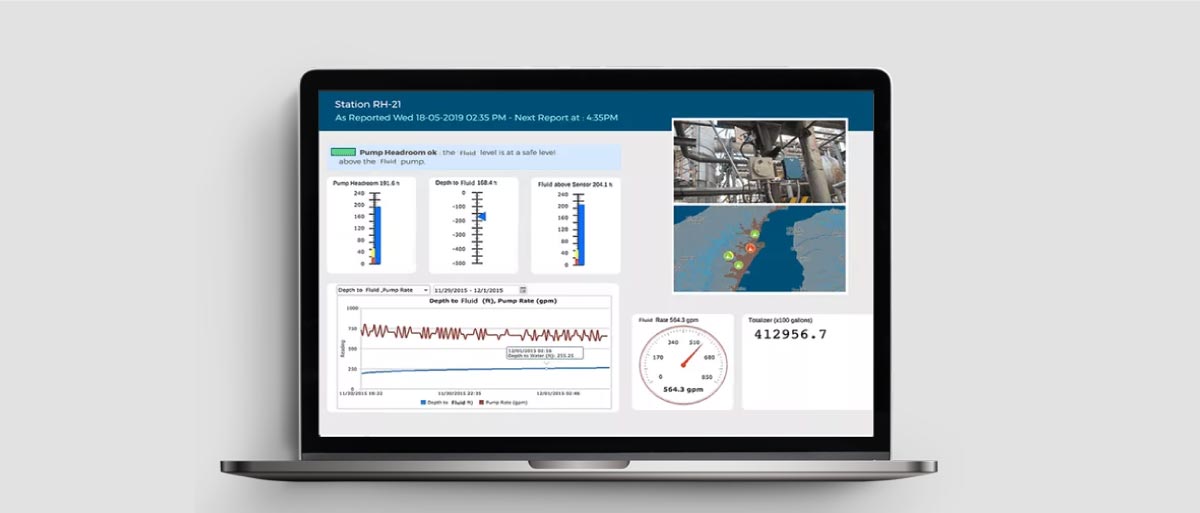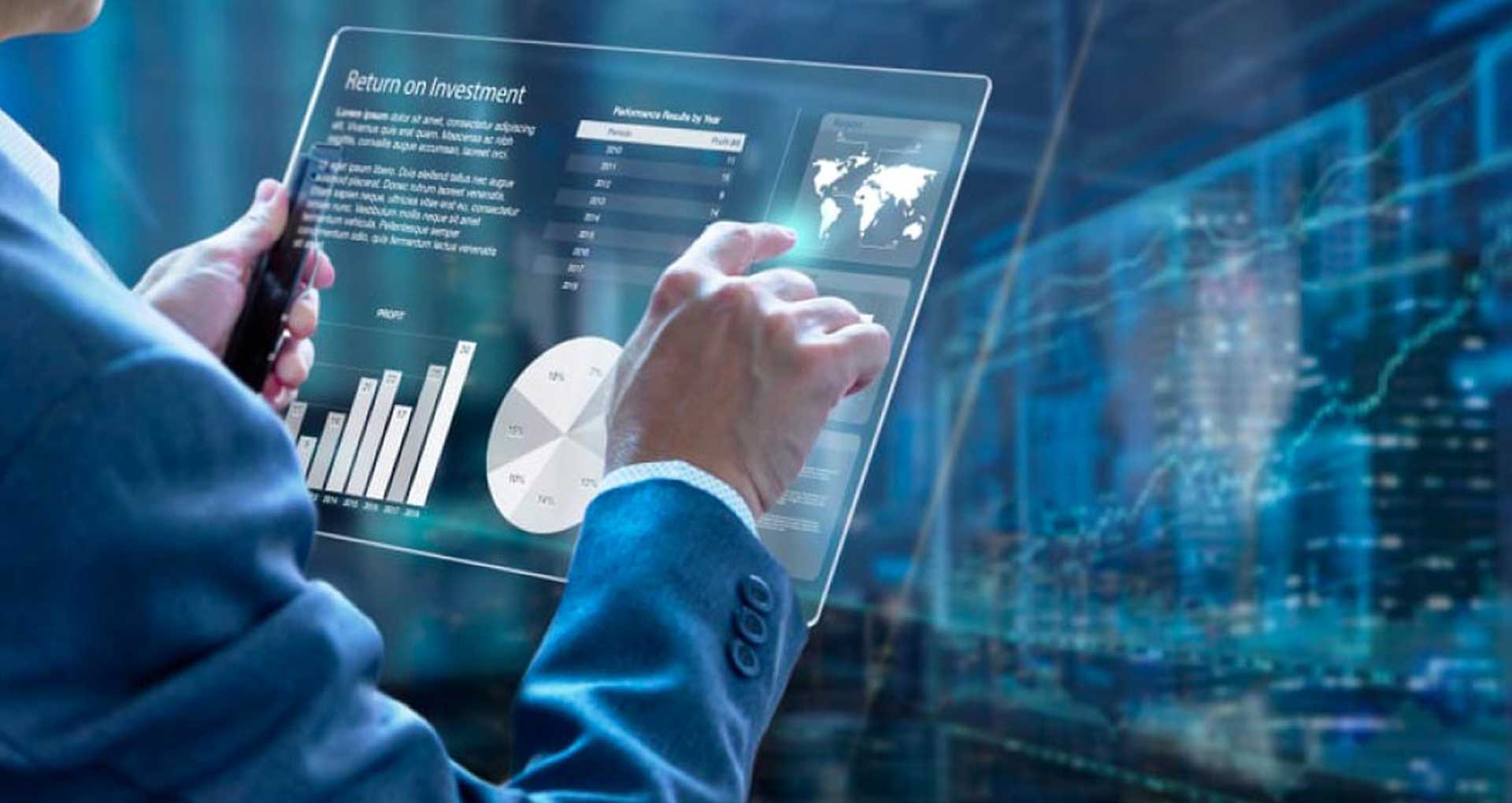Data does not bring value unless recorded, processed, and analyzed rightly. Until lately, companies had to spend considerable time and money to develop and deploy their data-crunching mechanisms. With the Internet of Things (IoT) and data linked fundamentally, this widespread data consumption and production will keep growing at an expanding rate. Thanks to the interconnection of several devices, networks & technologies, various IoT-based applications are used in different industries. As a result, most businesses struggle to manage and analyze the data that is consumed and produced at an exponential rate. This massive influx of data fuels the widespread adoption of IoT data analytics solutions.
If you are also looking to capitalize on this trending technology and wish to learn how IoT data analytics can help leverage transformative possibilities, then the blog is for you. So, let’s get started.
What is IoT Data Analytics?
IoT Data Analytics refers to analyzing data from Internet-connected devices or sensors to gain insights, identify patterns, and make informed decisions. IoT devices generate large amounts of data. Processing, storing, and analyzing this data is essential to extract valuable insights to help organizations improve their operations, optimize processes, and create new business opportunities. Further, it uses advanced data analytics techniques such as machine learning, deep learning, and artificial intelligence to analyze data from various sources, including sensors, actuators, and other IoT devices.
How It Can Maximize the Value of Business Data
It can help maximize the value of business data in several ways:
- Real-Time Monitoring: IoT devices can collect real-time data, allowing businesses to monitor their operations continuously. The monitoring can help identify problems quickly, prevent downtime, and improve operational efficiency.
- Predictive Analytics: IoT data analytics can be used to predict equipment failure, identify trends, and make informed decisions. It can help businesses reduce maintenance costs, increase production, and improve customer satisfaction.
- Customer Insights: IoT data can provide insights into customer behavior, preferences, and needs. This can help businesses develop targeted marketing strategies, improve product development, and enhance customer experience.
- Improved Supply Chain Management: IoT data can help businesses track inventory levels, optimize supply chain processes, and improve logistics. It can help companies to reduce costs, improve efficiency, and enhance customer satisfaction.
- Enhanced Decision-Making: IoT data analytics can provide businesses with a better understanding of their operations, customers, and markets. It would enable organizations to make more informed decisions, improve performance, and drive growth.
How Does IoT Data Analytics Work?
IoT analytics plays a critical role in unlocking the full potential of the IoT ecosystem by enabling organizations to derive insights from the vast amounts of data generated by IoT devices. Listed below is a core process of how it works;
- Data Collection: IoT devices are equipped with sensors that collect data on various metrics, such as temperature, humidity, location, and energy consumption. This data is transmitted to a cloud-based platform for processing and analysis.
- Data Storage: The data collected from IoT devices is stored in a database optimized for handling large volumes of structured and unstructured data.
- Data Processing: Once the data is collected and stored, it is processed and analyzed using advanced analytics tools and algorithms. It helps to identify patterns, trends, and anomalies in the data.
- Data Visualization: The insights generated from IoT analytics are presented in a visual format that is easy to understand. It would include dashboards, charts, and graphs that help to communicate the essential findings and trends to stakeholders.
- Actionable Insights: The insights generated from IoT analytics can be used to optimize business processes, improve operational efficiency, and enhance customer experience. For example, insights from IoT analytics can be used to predict equipment failures, optimize energy consumption, or improve product quality.
IoT Data Analytics Use Cases

The biggest obstacle to fully utilizing data analytics in IoT is the associated costs and speed of storing, processing & analyzing the extensive data flows from distributed IoT devices. Though despite this scenario, let’s look at some of the prominent IoT analytics use cases;
- Asset Tracking: IoT sensors can track the location and movement of assets such as vehicles and equipment, providing real-time visibility and enabling companies to optimize asset utilization and reduce theft.
- Smart Agriculture: Connected field machinery runs according to the data generated with IoT analytics. Environmental sensors can track the time, location, and weather changes and measure rainfall and sunlight in real-time to determine moisture levels and nutrients in the soil. This data can be correlated against crop health and yield requirements to deliver the exact amount of nutrients and water.
- Inventory Management: Real-time inventory and asset tracking with connected devices can help with timely replenishment and order fulfillment while ensuring optimal use of storage space. When the stock levels start depleting and the demand peaks, automated alerts can be triggered.
- Predictive Maintenance: Period maintenance is a prerequisite for the optimal performance of various infrastructures. Pre-defined operating procedures support the implementation of predictive maintenance models using IoT-enabled analysis. For instance, an IoT analytics platform enables fleet operators to know when to overhaul vehicles and prevent cargo damage by tracking trucks equipped with heating and cooling systems.
- Smart Cities: IoT data analytics can be used to improve urban planning, traffic management, and public safety by analyzing data on traffic patterns, air quality, and emergency response times.
- Smart Home Automation: IoT data can help optimize home energy consumption by analyzing usage patterns, turning off lights, or adjusting thermostats when the house is unoccupied.
- Supply Chain Optimization: IoT sensors can track the movement of goods throughout the supply chain, providing real-time visibility and enabling companies to optimize logistics and reduce costs. For example, data from sensors on delivery trucks can be used to track their location, speed, and temperature and optimize delivery routes to minimize transportation costs.
- Healthcare Monitoring: The development of connected medical devices, wearables, and health applications has led to the implementation of patient-centered analytics. The apps and devices are configured to automate notifications and alerts to healthcare professionals when a health condition needs medical attention. Sensors are now embedded in fitness equipment, drug dispensing systems, diagnostic devices, fitness wearables, and implants to enable real-time tracking of patients and equipment for immediate intervention and improved treatment outcomes.
- Environmental Monitoring: Smart grids offer a 360-degree view of energy consumption to enable optimum distribution and use of energy infrastructure in the most effective locations. IoT sensors can also monitor air quality and temperature variations to allow organizations to optimize energy use and improve sustainability. Further, IoT devices can monitor energy consumption and optimize energy usage, resulting in cost savings and reduced environmental impact.
Benefits of IoT Data Analytics
The advantages of internet of things analytics include essential insights and actionable intelligence, which can result in the following:
- Enhanced operational visibility and greater control enabling faster decision-making
- Automation of manual processes resulting in optimal resource utilization and lower operational overheads
- Ease of scaling the business as per consumer demands and expansion into untapped markets
- Discovery of new revenue streams resulting from timely resolution of operational challenges
- Faster resolution of issues with timely and accurate problem identification
- Faster product development that is customized to consumer needs and expectations
- More rapid detection and elimination of ineffective business flow for enhanced productivity
While IoT data analytics offers undeniable benefits across business areas, many organizations cannot realize the value of their data despite the proven advantages. Let’s find out why.
IoT Data Analytics Challenges & How To Overcome Them
With several IoT sensors generating data as often as every 30 seconds, it often overloads information. Other potential scenarios that impede its adoption include:
- Security Breaches: Since multiple connected devices work together and transmit data in near real-time, a security issue in one system can spread to other systems connected to a shared network. IoT projects must implement secure configurations to safeguard data and devices against hacking. Additionally, the upfront implementation cost can be considerably high.
- Project Designing: Currently, no internationally defined standards define IoT architectures’ design scope and implementation. There is no set approach that allows for design flexibility but, at the same time, may result in oversights and design flaws. IoT projects should ideally be outsourced to an experienced IoT app development company, with demonstrated performance on tasks relevant to your industry. Ultimately, there is no substitute for a carefully considered architecture design and app development.
- Data Storage: IoT devices generate a massive amount of data that must be securely stored. This highly time-sensitive data possesses a radically different lifecycle, unlike traditional business data. For instance, a vehicle’s location or traffic congestion reported today might have no significance tomorrow. It requires a considerable investment in data lifecycle management, storage capacity & security.
- Network Support: IoT data traverses an IP network that must ensure adequate bandwidth. Congested networks with restricted packets and high latency can decelerate data transmission. It may necessitate extensive architectural modifications with the addition of dedicated networks.
- Device Management: Every IoT device must be procured, installed, configured, and managed until replacement. With hundreds or thousands of IoT devices employed in a project, battery procurements and replacements for connected devices can result in a logistical nightmare. The implementation team must employ tools for efficient device management from initial setup and configuration to maintenance and disposal.
So, what is the best way to implement an IoT data analytics application? Finding the right technology partner to consult you on the best practices resulting in smooth and swift implementation, would be best.
How We Can Help Implement IoT Data Analytics
Every industry evolves daily, with IoT analytics playing a crucial role in this transformation. As your chosen IoT technology consulting partner, we leverage our experience in IoT app development and data analytics to help you with full-spectrum implementation services. Starting from need analysis and architecture design to post-launch support and solution optimization, we ensure your businesses enjoy sustainable benefits from making this investment. Explore our data analytics services and solutions to explore how we partner with organizations, from startups to mid-size & large corporations, to help them fast-track decision-making with data discovery, management, visualization & analysis.
Success Story: IoT-Powered Solution for Fluid Management

An Asian manufacturer of Fluid Control Systems wanted to replace their manual fluid control mechanism with an advanced IoT-enabled web solution. This industrial fluid management system would measure fluid flow and volume across multiple tanks while offering real-time visibility of functions across business operations.
We helped them develop a comprehensive fluid management with advanced data analytics and a customized dashboard to manage data, monitor equipment performance, optimize maintenance schedules, and automate reporting.
Benefits Delivered
- 75% reduction in the time spent on routine processes
- 30% more cost savings with early detection of issues
- 40% increase in customer base with a significant rise in sales revenue
Read more about Fluid Management with Advanced Data Analytics, its key features, and how it helped optimize routine processes and improve business performance.
Wrapping Up
In conclusion, IoT data analytics has emerged as a critical tool for organizations to extract insights and value from the vast amounts of data generated by connected devices. It has witnessed exponential growth across business verticals. Apart from offering economical storage, computation, and operational capabilities, it unifies data and accelerates data sharing and decision-making. IoT data analytics can provide actionable insights that help businesses make data-driven decisions and optimize operations. It would be by utilizing sophisticated data analysis techniques and machine learning algorithms.
This blog has explored the importance of IoT data analytics, use cases, benefits, and the challenges organizations might face in extracting value from IoT data. Businesses can be more responsive and proactive to the demands of their clients and stakeholders with new, actionable data. Overall, the potential benefits of IoT data analytics are enormous, ranging from increased efficiency and productivity to improved customer experiences and new revenue streams. However, realizing these benefits requires careful planning, investment in the right tools and technologies, and a deep understanding of the business use cases and data sources. That’s where a trusted data analytics consulting company like us can make all the difference. If you are considering investing in IoT analytics, now is an excellent time to leap. We can help you achieve a lot with it!











 30 Min
30 Min


